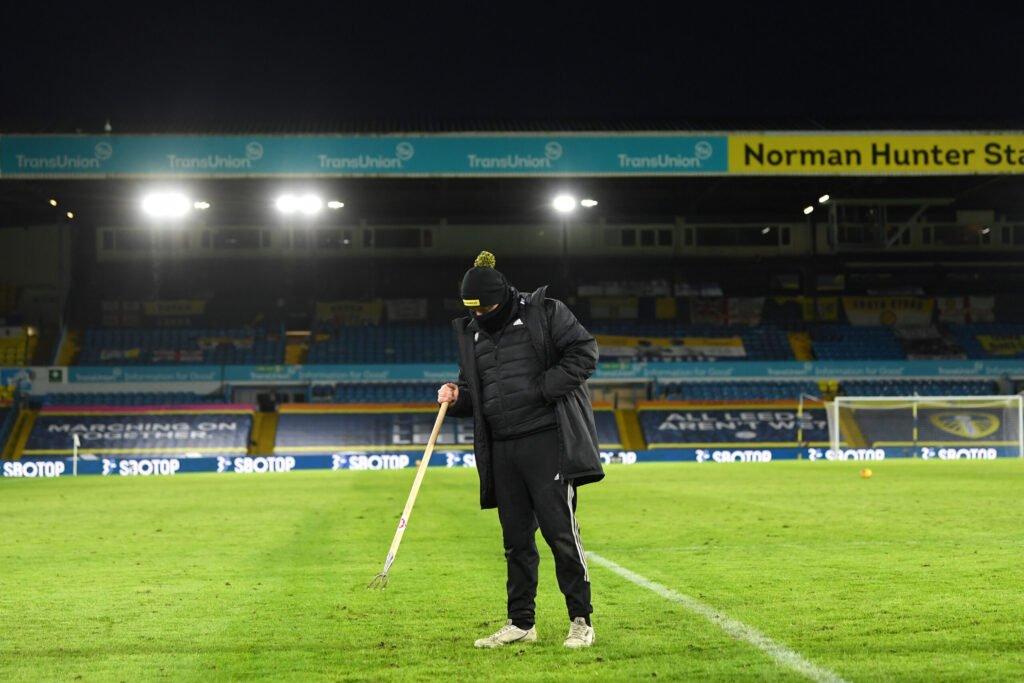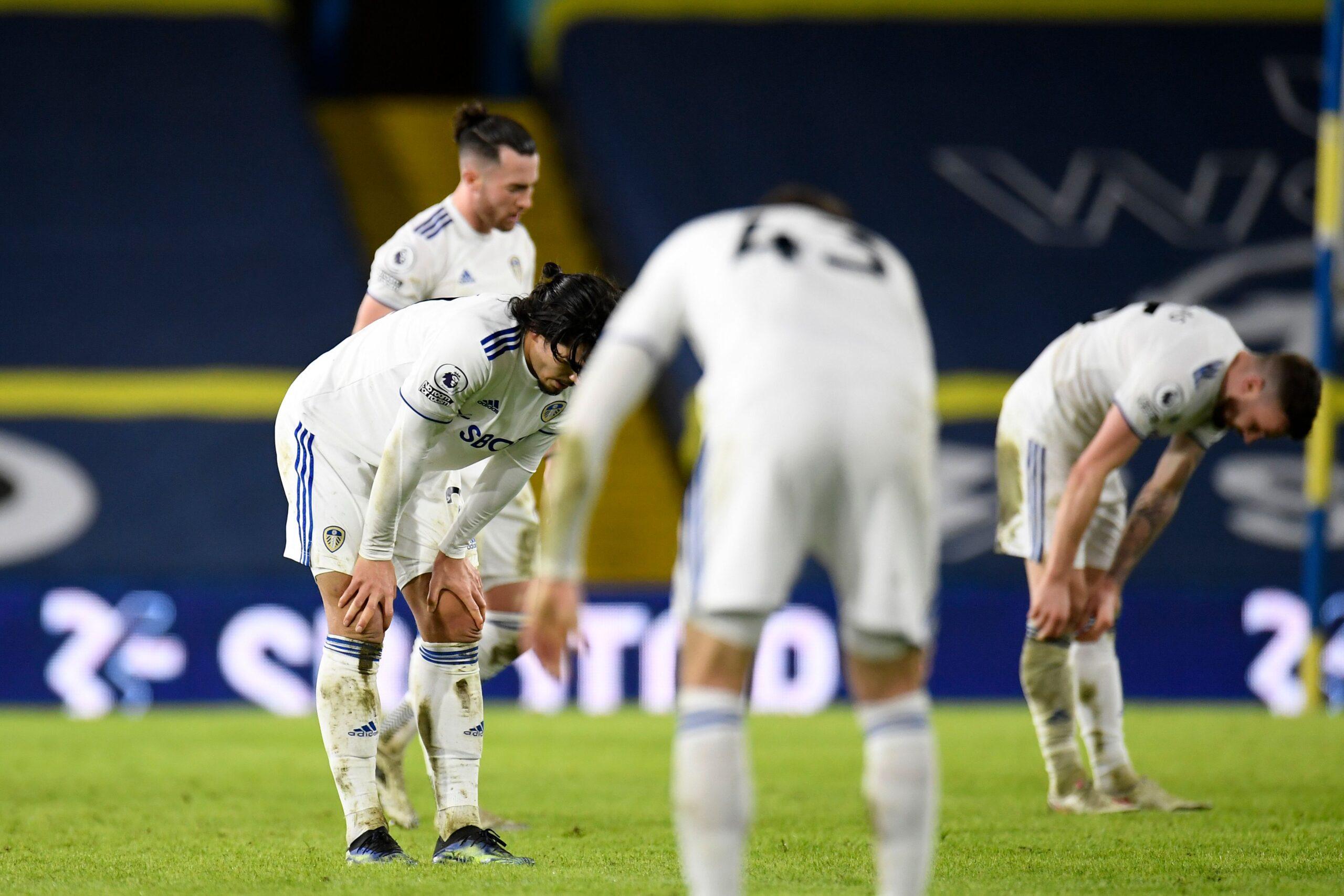Leeds’ pitch problems explained

 74
74 
Leeds United’s players will walk out next month to what looks like a brand new pitch at Elland Road. The club is tearing up the turf there after a 1-0 defeat to Brighton & Hove Albion, the final straw for a surface that is far beyond repair. A two-week break between home games provided a window for a quick and necessary fix, albeit at considerable expense.
Leeds have purchased a fresh top layer of grass that was being grown for Tottenham Hotspur, paying over £300,000 to acquire it mid-season. Spurs had no immediate need for it and a price was agreed in the days after Leeds lost to Brighton last weekend. Despite Marcelo Bielsa’s refusal to blame the result on the playing conditions at Elland Road, there are 10 more matches to be staged there this season and he was privately concerned with the way the surface was cutting up and the potential impact on future performances.
The new layer, which Leeds’ ground staff and contractors are working to install, will bed in quickly and be ready for their next home fixture against Everton on February 3. But irrespective of the six-figure outlay, it is a temporary solution for a problem that has been in the background at Leeds for many years and demands more major investment. Ground staff who worked at Elland Road in the late 1990s encountered issues with drainage and waterlogging, which appear to have been there since the day the foundations were installed. The summer ahead will see a complete refit.
Leeds planned to pay for a new pitch and contract out the work at the end of last season but COVID-19 interfered and cut the summer short, leaving too little time for the job to be finished. The work they are doing at present involves replacing the surface alone but when this season finishes, specialists will dig out and replace the drainage system, the undersoil heating and all the different layers of soil, sand and gravel. It is 25 years since Elland Road underwent a full installation and the structure is suffering, as chief executive Angus Kinnear said in his programme notes last Saturday, from an “ancient drainage system” and “decades of under-investment”.
There is an irony in the fact that Elland Road has been resilient to the weather for the duration of the pitch’s lifespan. Leeds have not been forced to postpone a home game because of the weather since 1995, before it was fitted, and even that postponement was blamed on a blockage in a public drain behind the stadium’s South Stand. Increasingly, though, the winter months have put pressure on their ground staff and taken a heavy toll on the grass, causing it to deteriorate as it has in the Premier League. The club accepts that their head groundsman, Kiel Barrett, has a thankless task on his hands until reconstruction takes place.
Barrett was appointed by the club in 2012 after the retirement of Norman Southernwood, a member of the ground staff at Leeds for almost 20 years. Southernwood, who previously worked for Halifax Town and Leeds’ rugby league team, came to Elland Road in 1998 after the club bought the stadium back from Leeds City Council. The pitch there was new, replaced in full after Elland Road was selected as a venue for Euro ’96, but even in the early days, the drainage was unreliable.
“When I first started working for Leeds, parts of the pitch were difficult,” Southernwood told The Athletic. “It was a new pitch but something had gone wrong with it. We did a bit of investigating and when we got all the way down to the gravel layer, we found that a fine film had formed over parts of it. It was natural but it had the consistency of plastic and it meant that the water couldn’t run through it.
“I’ve no idea why that happened. I don’t know if mistakes were made when the pitch first went in or if it was down to the material oxidising but something wasn’t right and fixing it properly wasn’t an option because you were talking about a massive job that would have cost a lot of money. There wasn’t an easy way of sorting it out.
“What you found was that the grass would hold water in certain areas. The northern goalmouth was one of the bad spots and water gathered by the West Stand, where the players come out of the tunnel. You could walk on another five yards and find that the grass was fine but in the bad patches, all you could do was fork it. Any time the rain was heavy, you knew you’d have a job on.” The turf by the tunnel is still the area which Leeds tend to cover with tarpaulin on days when the rain is torrential.
The club did not have the inclination to address the deficiencies with their pitch during their previous spell as a Premier League club. After their relegation in 2004, they did not have the money either. Industry specialists estimate that the reconstruction of the pitch later this year will cost Leeds upwards of £1.5 million, the price of leading hybrid surfaces. Kinnear said he expected the work would take 14 weeks, including the creation of new dugouts that meet Premier League standards.

Leeds lost their last match at home to Brighton (Photo: Peter Powell/POOL/AFP via Getty Images)
Elland Road’s existing pitch is a Fibresand model, a design that uses synthetic fibres to strengthen the layer below the natural turf and improve the durability of the grass. These days, many elite teams have moved towards stitched surfaces made by firms like SIS and Desso Sports. Their products blend artificial grass with real turf and although the polypropylene blades make up no more than five per cent of an entire playing area, they extend its life significantly. The highest quality of stitched surfaces are useable for at least a decade and are usually replaced in 10-year cycles.
Tottenham’s state-of-the-art stadium, opened in 2019, was fitted with a Desso pitch and the London club keep two different surfaces there, one stored under the other and set aside for NFL matches and concerts. The NFL base, which is fully synthetic, is understood to run the risk of affecting the football pitch when it sits above it and Spurs arranged for a separate hybrid surface to be maintained elsewhere. COVID-19, however, has prevented any American football from taking place in London this season and Spurs agreed to allow Leeds to buy their spare turf after finalising a deal with Kinnear earlier this week.
Leeds, whose pitch has been maintained previously by Chappelow Sports Turf, a company based in Mirfield, are enlisting Hewitt Sportsturf to carry out this summer’s full installation. Hewitt Sportsturf was responsible for fitting the pitch at Tottenham and was also growing the pitch that Leeds bought this week. The replacement surface at Elland Road, a hybrid layer, will see Leeds through the rest of the Premier League term and provide Bielsa with a more playable field.
Full reconstruction at the end of the campaign will bring Leeds up to speed with technological advances. Jason Booth, a former groundsman at Leeds Rhinos and the chief operating officer for the Grounds Management Association (GMA), said “cutting-edge” research had revolutionised the quality of professional pitches and allowed sports teams to move on from the days when ground staff were “trying to get 100mph out of a car that only does 50mph”.
“There have been millions of pounds of research into fertiliser, grass seed and soils,” Booth says. “With some of the products, it takes seven to 15 years before they hit the market. The end product is the quality of the pitches you see on your TV screen week in, week out.
“As a rule of thumb, the construction and drainage are usually 20 to 25-year systems. Depending on usage, the clubs with more money can replace the actual pitch (the top layer) in a 10-year cycle. A pitch can last for years but it’s good practice to relay reinforced pitches every 10 approximately. Obviously, there’s a cost issue involved in that.”
With a pitch like Elland Road’s, wet weather brings sand and other particles to the top of it and forms what Booth calls a “cap” on the surface. The cap prevents the grass from growing and recovering as it should, leading to the divots and uneven turf that Leeds have been contending with for several weeks. Poor drainage exacerbates the damage.
Booth oversaw the installation of a new Fibresand pitch for Leeds Rhinos in 2012, a project that cost £1 million. Barrett was employed as one of his assistants, cutting his teeth in rugby league before becoming head groundsman at Leeds. Kinnear wrote in defence of Barrett last weekend, saying: “The fact that the pitch is even playable is a testament to Kiel’s skills.”
“Kiel’s the most technically-gifted groundsman I’ve ever come across,” Booth says. “What I mean by that is that he understands the science and chemistry of pitches so well. He’s got a natural feel for it.
“It was good to see the comments from (Kinnear) because you can tell from them that there’s a strong relationship there. Grounds people these days have to be good communicators. They have to have a strong relationship with the people at the top of a club. You can tell that Leeds trust Kiel’s ability.”
Southernwood was always philosophical about the quality of the grass at Elland Road. In the EFL, where Leeds resided for more than a decade, the cash was never available to improve it and he learned to make the best of it. “But it’s an investment like anything else, the same as buying players,” Southernwood says. “The better the pitch, the better the football can be. For a groundsman, you take a huge sense of pride in making the pitch as good as possible.”
Promotion has given Leeds the money to bite the bullet, although the club was committed to renewing the pitch last summer regardless. Leeds announced yesterday that work on full installation will start in May, as soon as the final league match against West Bromwich Albion is done. Last weekend, Brighton manager Graham Potter described the Elland Road surface as “very soft, long and very heavy”. It should not be too long before Leeds are able to consistently give Bielsa the conditions he asks for: short, wet and fast.
